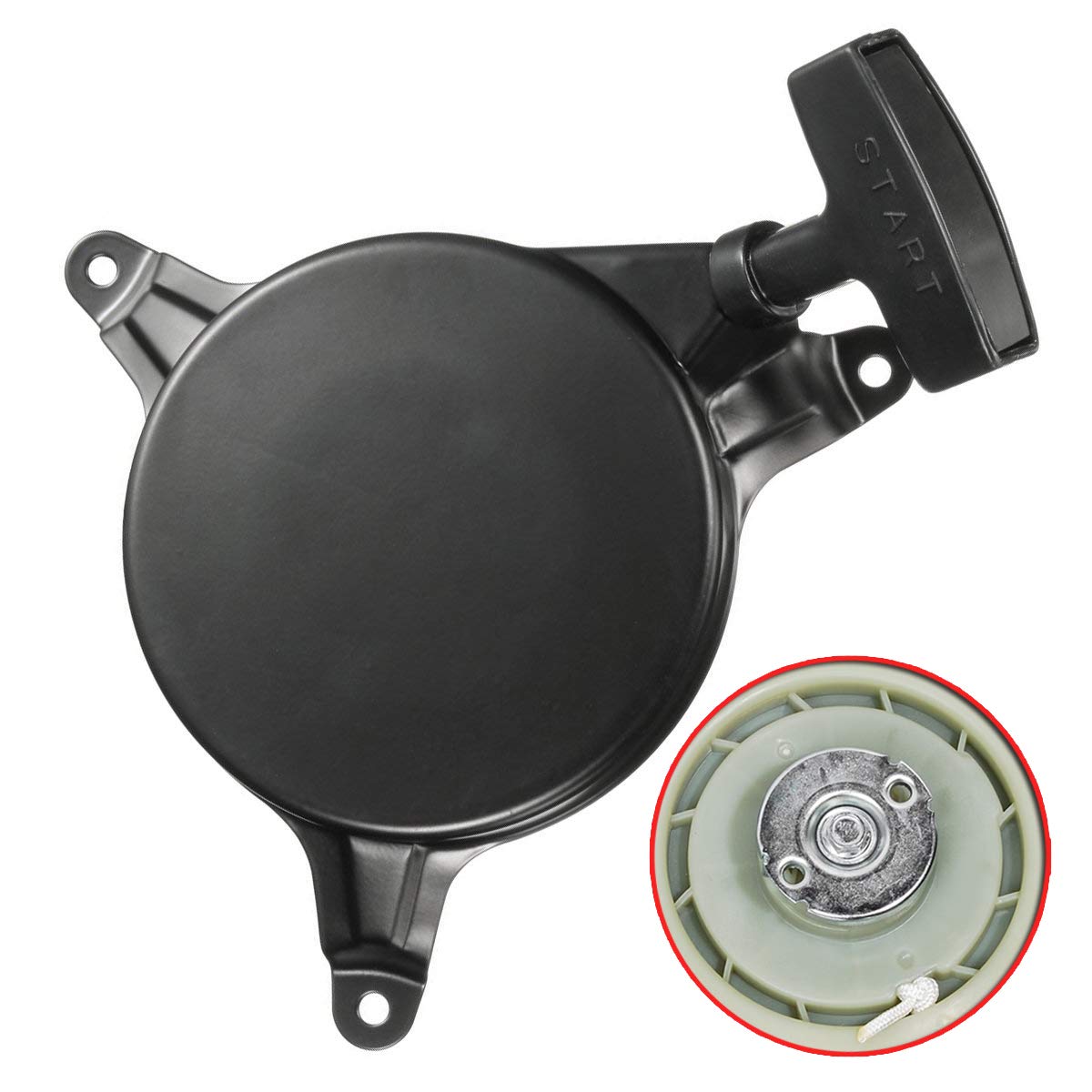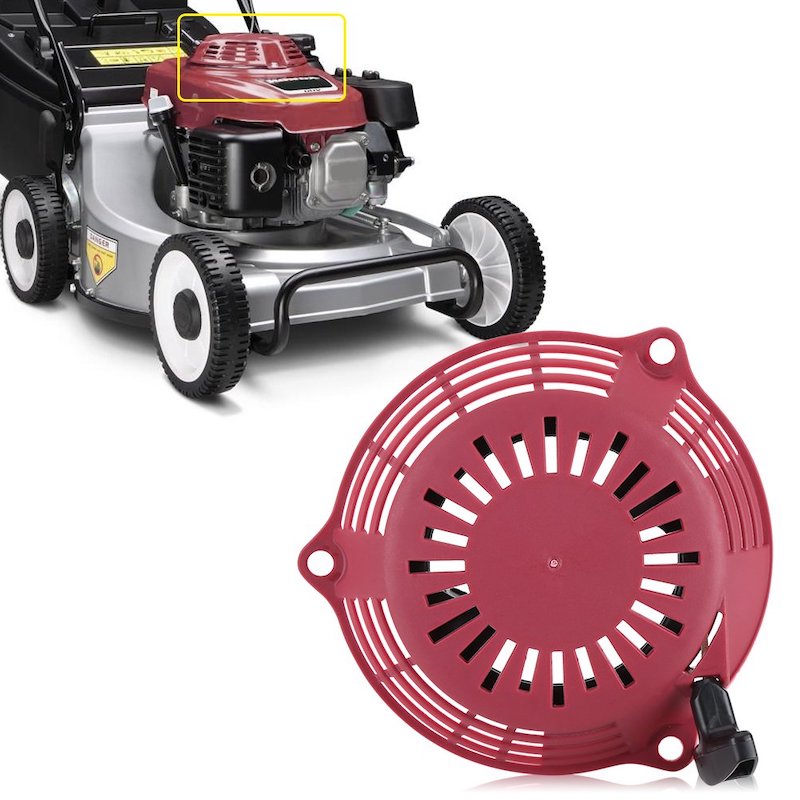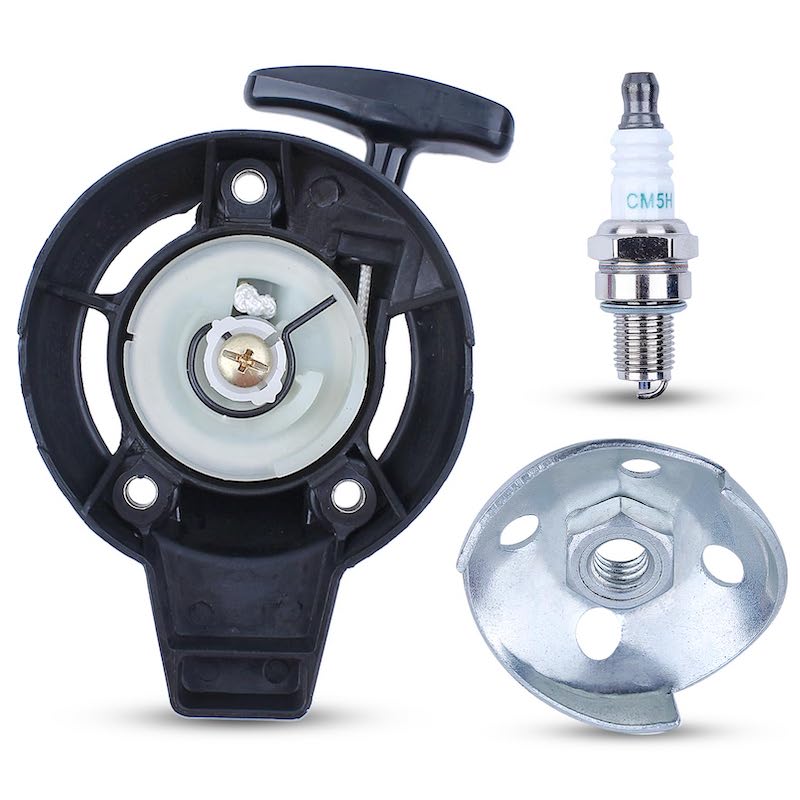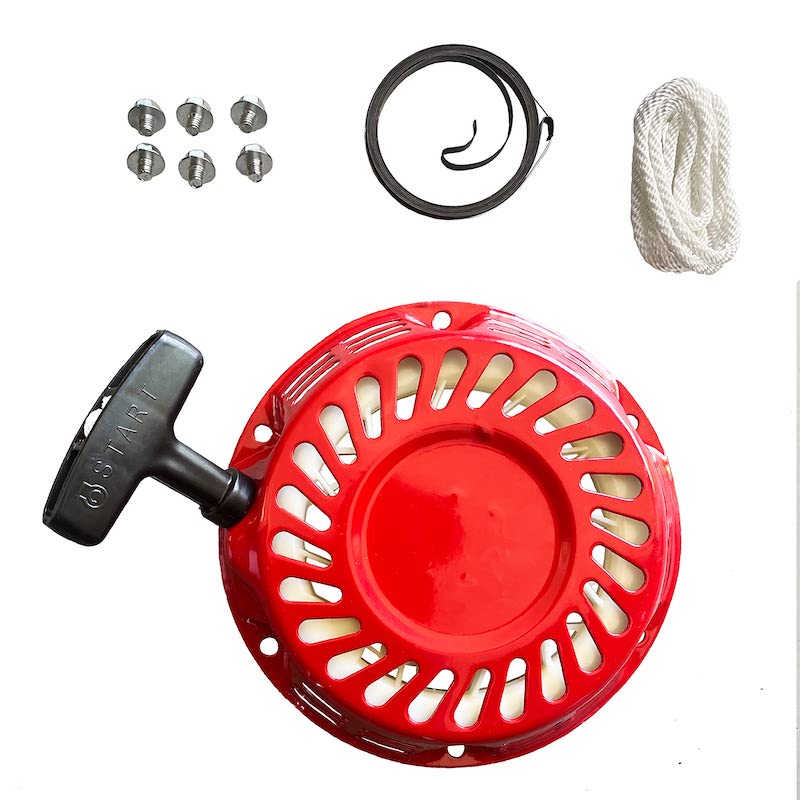Initial Checks and Safety Precautions
Before tackling a stuck lawn mower pull cord, safety is crucial. Starting with initial checks can prevent further damage and ensure a safe working environment. Below are some critical steps to take:
Inspect the Blades for Obstructions
First, look for blockages around the mower’s blades. Obstructions like rocks, sticks, or compacted grass can hinder blade movement. With the mower off, flip it carefully and clear any debris caught under the deck. Remember, always wear gloves during this process to protect your hands.
Disconnect the Spark Plug Before Maintenance
To prevent the mower from accidentally starting, disconnect the spark plug. This is a vital safety step. Pull the plug’s wire away gently but firmly until it’s free. Only now is it secure to examine and resolve the issue with your lawn mower pull cord being stuck.
Lubrication Methods
One of the simplest ways to fix a lawn mower pull cord stuck is by lubrication. A dry or dirty cord can cause friction, making it difficult to pull. Here’s how to apply this method effectively:
Using WD-40 to Ease the Cord
WD-40 is a well-known lubricant that can help loosen a stuck cord. Here’s a step-by-step approach to use it:
- Spray WD-40 directly onto the pull cord mechanism. Aim for the area where the cord retracts.
- Gently pull the cord a few times to work the lubricant in. Be patient, as it may take a little time for the WD-40 to penetrate.
- Wipe any excess lubricant off to prevent attracting dirt.
Repeat these steps if necessary. Lubrication may not always solve the problem, but it’s a quick and easy thing to try before moving onto more complex repairs.
Resolving Hydrolocking Issues
To fix a lawn mower pull cord stuck due to hydrolocking, follow these steps:
Removing Excess Oil from the Cylinder
Hydrolocking happens when oil floods the cylinder, making the piston unable to move. To address this:
- Remove the spark plug using a tool, and set it aside to dry.
- Pull the start cord several times to eject oil from the cylinder.
- Let any remaining oil evaporate before putting the spark plug back.
Ensuring the Spark Plug is Dry
The spark plug must be dry to work correctly. After removing excess oil:
- Wipe the spark plug with a clean cloth.
- Check for oil or residue and clean it thoroughly.
- When it’s completely dry, reattach the spark plug to the mower.
Follow these steps to help prevent your lawn mower pull cord from getting stuck due to hydrolocking.
Mechanical Fixes for the Pull Cord
When your lawn mower pull cord is stuck, mechanical issues are often to blame. Two common mechanical problems include a malfunctioning recoil spring system, and a worn or broken pull cord. Tackling these issues can restore the cord’s functionality. Here’s what to look for and how to fix it.
Examining and Adjusting the Recoil Spring System
The recoil spring system is key for a working pull cord. If this system jams, the cord will feel stuck. First, remove the mower’s cover to reveal the recoil mechanism. Look for tangles or misalignment in the pull cord. If tangled, carefully untangle it and ensure the cord rewinds smoothly onto the spool. If it’s loose, adjust the tension to make sure it retracts properly. Reassemble and test the cord.
Replacing the Pull Cord if Necessary
Sometimes, the cord itself is the issue. It could be frayed or broken inside the mechanism. If this is the case, you’ll need to replace it. Purchase a suitable replacement, making sure it’s the right thickness and length for your mower. Thread the new cord through the recoil assembly, tie it securely, and rewind the cord onto the spool. Ensure the cord is taught but not overly tight. Fit everything back together, and give it a pull to see if it has fixed the problem.
These steps can help remedy common mechanical problems with a lawn mower pull cord stuck. Regular maintenance and checks can prevent these issues, keeping your mower in top working condition. If at any stage you feel unsure, consult a professional.
Starter Assembly Maintenance
Proper maintenance of the starter assembly can prevent your lawn mower pull cord from becoming stuck. Here’s what you need to know to keep the starter mechanism in good working order.
Cleaning the Starter Mechanism
A clean starter mechanism is essential for smooth operation. Follow these simple steps:
- Disconnect the spark plug for safety.
- Remove screws to open the starter mechanism housing.
- Gently remove dust, debris, or old oil with a clean cloth.
- Reassemble the housing and reconnect the spark plug.
Keep the mechanism free from build-up to avoid starting issues with your mower.
Checking for Rusted Parts and Applying Oil
Rust can impede the movement of the starter mechanism. To address rust:
- Take apart the starter mechanism as before.
- Inspect for rust, especially on the ball bearings.
- Use fine steel wool to gently remove rust.
- Apply a small amount of oil to moving parts.
- Put everything back together and pull the cord to test.
Regularly check for rust and lubricate to ensure the pull cord remains unstuck.
By maintaining the starter assembly, you can help prevent the frustration of a stuck lawn mower pull cord. If you’re not comfortable with DIY fixes, don’t hesitate to seek professional help.
Additional Troubleshooting Tips
When addressing a lawn mower pull cord stuck, several other factors may come into play beyond the basics already covered. Here are additional troubleshooting tips that could help resolve the issue.
Ensuring Correct Oil Level
An incorrect oil level can cause problems with the mower starting. Check the oil level — it should be between the min and max marks on the dipstick. If low, top it off with the right type of oil for your mower.
Clearing Debris from Under the Deck
Debris trapped under the mower deck can impede blade and engine function. Turn off the mower and inspect underneath. Removing any buildup of grass, leaves, or mud can free up the blades, potentially easing the pull cord.
Verifying the Tension of the Stop/Start Cable
If the stop/start cable is too loose, it won’t properly disengage the brake. This adds tension to the pull cord, making it harder to pull. Adjust the cable to ensure it’s at the correct tension according to the manufacturer’s guidelines.
Assessing the Self-Propel Drive Belt
A dislodged self-propel drive belt might interfere with the engine’s operation. Check the belt to see if it has slipped or is damaged. If necessary, consult your mower’s manual to properly reattach or replace the belt.
These suggestions might resolve the issue of a lawn mower pull cord stuck. Regular checks and maintenance will keep your mower running smoothly.
When to Replace the Starter Assembly
The starter assembly is crucial for the pull cord to work effectively. If your lawn mower pull cord is stuck and the above methods have not worked, it might be time to consider replacing the entire starter assembly. Here’s how to identify if that’s the necessary step and how to go about it.
Identifying Mechanical Failure
Identify mechanical failure in the starter assembly by inspecting the recoil mechanism and the cord. Watch for these signs:
- The cord can’t retract back into the assembly.
- The recoil spring doesn’t have any tension.
- The assembly has visible rust or damage.
If you find any of these issues, a replacement of the starter assembly is likely needed.
How to Order and Replace the Starter Assembly
Ordering and replacing the starter assembly can be straightforward. Follow these steps:
- Locate the right replacement part, ensuring it matches your mower’s model.
- Disconnect the spark plug for safety before you begin.
- Remove the old starter assembly, usually secured with screws.
- Install the new starter assembly, attaching it firmly with screws.
- Reconnect the spark plug and test the pull cord.
If you’re unsure about the part or the process, consult the mower’s manual or contact a local dealer. For some engines, like Briggs & Stratton, you may need to visit a dealership for the proper part. Remember, frequent maintenance can prevent such issues, but when a replacement is necessary, following these instructions will help you get your mower back to work.



